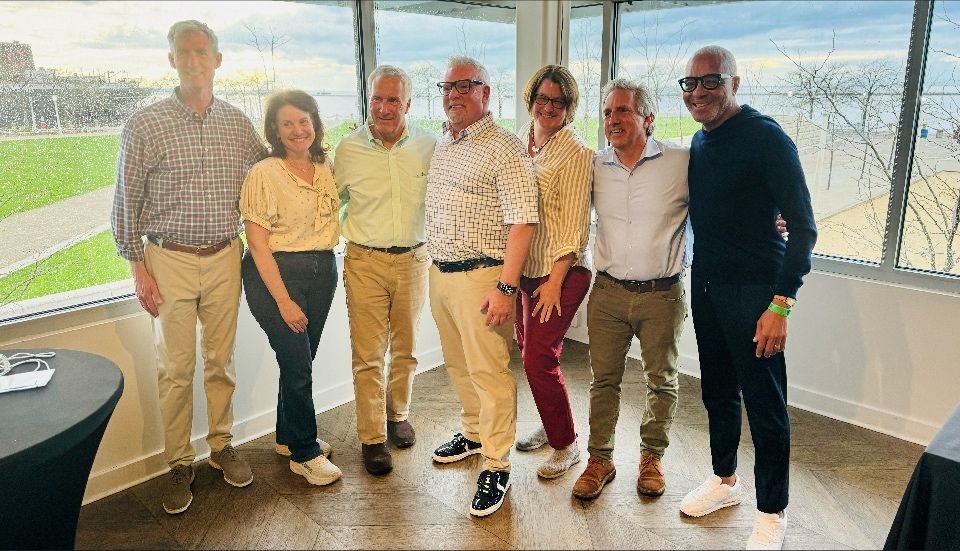
NBOA President and CEO
Last week during my travels on behalf of NBOA, I found myself in a group of independent school business officers, who were gathered to do what business officers do best: share ideas and exchange solutions for common problems. With this exchange comes a one-of-a-kind collegiality that stems from being in a room where you speak the same professional language. What was unique for me was being in a room with six individuals who have served, or currently serve, as the chair of the NBOA Board of Directors. That signaled 12 years of NBOA leadership for me.
I was so struck by the moment that I had to grab a photo, which I later shared on LinkedIn with this message: “What they don’t tell you when you endeavor to be an association CEO is that your board chairs will become some of the best professional colleagues and friends in your entire career! Here are six examples of that! Thank you Dallas, Frank, Tracey, Chuck, Rose and Duncan for your leadership and friendship!”

It reminded me of the importance, for any nonprofit, be it an association like NBOA or an independent school, of a strong relationship between board chair and organizational leader, be it the head of school or executive director. I couldn’t help but reflect on more than a decade of working with such smart, committed and inspiring leaders, who I count as some of my best colleagues and friends.
While it’s clear that I’m privileged to serve the most collegial of associations, with incredibly generous and dedicated members, I also work to develop strong relationships with NBOA’s Board Chairs. Here’s my personal recipe for success for building and sustaining these critical nonprofit leadership partnerships.
- Trust – It’s imperative to assume trust and build on it from day one. Like any relationship, personal or professional, trust has to be the foundation for strong execution, not to mention innovation.
- Communication – Regularly scheduled check-ins ensure that you keep each other in the loop. In addition, I ask the NBOA Board Chairs I’ve worked with to be available for spontaneous communication because a quick text or call may be necessary to confer, inform and resolve an unexpected issue when it inevitably arises.
- Candor – The partnership must provide a safe space to respectfully speak the truth and share honest opinions. Candid and constructive conversation enables the best decision to emerge and be carried forward.
- Care – I have been so fortunate to work with individuals who have truly been committed to the mission and success of the association and to my success as well. And I am equally committed to their success. How does that manifest itself in the work? We develop board meeting agendas well in advance, schedule pre-game calls, and work on talking points if needed. All of this is designed so my board chair partner, who is a volunteer, can be successful for the association and successful on behalf of their peers.
My colleague James Palmieri, executive vice president at NBOA, who has been on the other side of the table as board member and then board chair of One Schoolhouse, perhaps sums it up best: “We know that when the board and staff are firmly aligned, real change happens. Therefore, ensuring alignment between board and staff leadership has been key to our recent success in planning for the future and advancing and sustaining our DEI work, investing in people and resources, and in considering and taking risks, when appropriate.”

Follow NBOA President and CEO Jeff Shields on LinkedIn.



